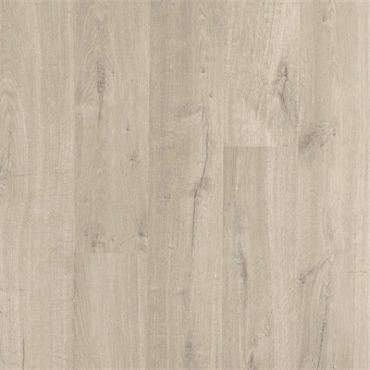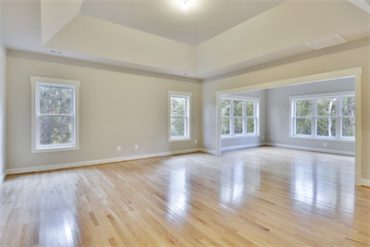1. Vinyl Sheet Flooring: Vinyl sheet flooring comes in large rolls and is typically installed in a single piece. It offers a seamless look and is a great choice for spaces with minimal seams. This option is particularly suitable for rooms with high moisture, as there are fewer seams for water to penetrate. Vinyl sheet flooring often comes with a wear layer for durability and is available in various designs, from wood and stone patterns to abstract visuals.
2. Vinyl Tile Flooring: Vinyl tiles are individual tiles that can be arranged to create patterns or mimic the appearance of stone or ceramic tiles. They are available in various sizes and can be glued down or sometimes have a peel-and-stick backing for easy installation. Vinyl tiles offer design flexibility and allow you to get creative with your floor design.
3. Luxury Vinyl Plank (LVP) Flooring: Luxury Vinyl Plank (LVP) flooring replicates the look of hardwood planks. It’s available in different lengths, widths, and styles, allowing you to achieve the aesthetics of hardwood while benefiting from vinyl’s durability and water resistance. LVP often features realistic wood textures and grain patterns.
4. Luxury Vinyl Tile (LVT) Flooring: Luxury Vinyl Tile (LVT) flooring emulates the look of ceramic or natural stone tiles. Like LVP, LVT offers a wide range of design options, including various tile sizes, patterns, and textures. It’s an excellent choice for achieving the look of high-end tiles without the maintenance requirements.
5. WPC (Wood-Plastic Composite) and SPC (Stone-Plastic Composite) Vinyl Flooring: WPC and SPC vinyl flooring are subcategories of luxury vinyl flooring that incorporate a core layer made of a composite material (wood or stone-plastic) for added stability and rigidity. These options are known for their resilience and durability and often come with enhanced water resistance properties.
6. Different Wear Layer Thicknesses: Vinyl flooring wear layers vary in thickness, typically ranging from 6 mils to 20 mils or more. Thicker wear layers offer greater durability and protection against wear and tear. Consider your space’s foot traffic and intended use when selecting the appropriate wear layer thickness.
7. Installation Methods: Vinyl flooring options can be installed using various methods, including click-lock or floating installation, glue-down installation, and peel-and-stick installation. Choose the method that aligns with your DIY skills and the requirements of your space.
8. Patterns and Designs: Vinyl flooring comes in an extensive range of patterns and designs, from realistic wood and stone visuals to more artistic and abstract options. Explore different patterns and design motifs to find a style that resonates with your interior design vision.
9. Sustainability and Eco-Friendly Options: Some vinyl flooring products are designed with eco-friendly materials, low VOC emissions, and recyclability in mind. If environmental considerations are important to you, look for vinyl options that prioritize sustainability.
10. Brand and Quality: Research reputable brands that offer high-quality vinyl flooring products. Read reviews, consider warranties, and seek recommendations to ensure you’re investing in a reliable and long-lasting option.
As you explore vinyl flooring options, take into account your space’s requirements, your design preferences, and your budget. Visiting showrooms or consulting with flooring professionals can also provide valuable insights and guidance in making the right choice for your flooring project.















